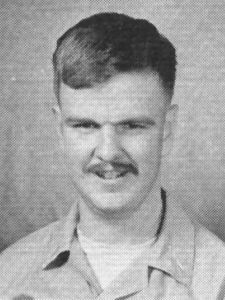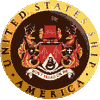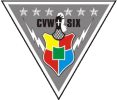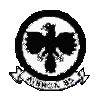| |
|
|
|
Alan Frederick Ashall
Lieutenant Commander
VA-85, CVW-6, USS AMERICA, TF 77, 7TH FLEET United States Navy Billings, Montana June 06, 1943 to August 02, 1978 (Incident Date August 29, 1968) ALAN F ASHALL is on the Wall at Panel W46, Line 56 See the full profile or name rubbing for Alan Ashall |
  |

|



| |
|
LT Al Ashall joined Attack Squadron Eighty-Five (ATKRON 85 or VA-85, squadron callsign BUCKEYE) as a replacement toward the end of the squadron's 1967 Viet Nam deployment. On this cruise, Al was teamed with a first-deployment pilot, LT Bob Duncan. Homeported at Naval Air Station Oceana (Virginia Beach, VA), VA-85 deployed in USS AMERICA (CV-66) in early 1968. Following work-ups, we proceeded to the South China Sea via Rio de Janario, the Cape of Good Hope, and the Indian Ocean, arriving at Yankee Station the first of May 1968. VA-85 had 15 INTRUDER aircraft, 12 A-6A bombers and 3 A-6B SAM killers. These three aircraft were partially stripped of the normal DIANE navigation and attack system, and instead were fitted with surface-to-air radar detection equipment and the gear needed to effectively use the Shrike and long-range Standard ARM (Anti-Radiation Missile) missiles. Four crews, including Bob Duncan and Al Ashall, had qualified on the A-6B in addition to their normal A-6A qualifications. Initially, the A-6B's were used in the same manner as the equivalent USAF Wild Weasel aircraft: they accompanied daylight strike forces as advance Iron Hand and SAM suppressors. Normal weapons configuration was 2 Shrikes on the outboard wing pylons and two Standard ARMs on the inboard pylons, with a drop tank on the centerline. Because of the scarcity of the Standard ARMs, we were encouraged to use them only when a really promising target came up, and then only if the target was beyond Shrike range or if the Shrikes had been expended. As the cruise progressed, VA-85 increasingly found itself tasked with night single-aircraft missions over North Viet Nam -- exactly what the aircraft was designed for. However, the inability of the A-7As and F-4Bs to operate effectively over land at night meant that there were fewer aircraft over the beach, and consequently these few aircraft drew more concentrated attention from NVN's anti-air defenses. The A-6B tactics evolved accordingly. An A-6B would launch with the attack birds, and everyone would go their separate ways . . . the attack birds at low level and the A-6B wandering around feet dry at 20,000 feet or so. If and when the NVN gunners lit off their fire control radars, the A-6B would attempt to engage them with either Shrike or Standard ARMs. Given the limited number of A-6Bs, these missions grew to "double-cycles" -- launch and go over the beach with the first batch, go feet wet to refuel when they went home, and be back in position as the second wave came feet dry. As the weather worsened, the A-6As would operate below the cloud cover while the A-6B would remain above (or in) the clag. This situation exacerbated the A-6B's weakest point: a combination of detection system and missile delivery parameters left the A-6Bs vulnerable to a close-in attack from the rear hemisphere. If the A-6B found itself targeted from the rear, SAMs might arrive before the Shrike or Standard ARM missiles could take out the SAM guidance radars. If you were operating within the cloud layers and couldn't see the SAMs, dodging them became a very tricky affair. On 29 August 1968 Bob Duncan and Al Ashall were scheduled for one of these missions, a double-cycle in support of two A-6A waves. The first wave came and went with no SAM activity, and the A-6B joined with an EKA-3D to refuel before going feet dry to await the second A-6A wave. Between the A-6B's "Feet dry" call and the arrival of the second A-6A wave, the EKA-3D recorded SAM missile radar activity. As usual, the on-station EC-121 flight following aircraft had lost radar contact with the Buckeye SAM killer after it went feet dry. No calls were heard from the Buckeye A-6B, and it failed to return. What happened? What is known is simple: The Buckeye flight went feet dry and was not heard from again. What may be surmised is equally simple: The NVN air defenders waited it out until the A-6B was alone over North Vietnam and then took it under fire from the rear quadrant. While the weather low was reasonable, heavy towering cumulus and high layers blanketed North Viet Nam that night -- the worst possible situation for SAM-dodging. It appears likely that the hunter became the hunted, and lost a missile exchange. Al was carried as "Missing in Action" for ten years; during this time he was promoted to Lieutenant Commander. On 02 August 1978, his status was changed to "Killed in Action". A-6 aircrews were accustomed to operating alone, without radar flight following or other friendly support. Bob and Al recognized the inherent risks and accepted them without qualm. Their professionalism and dedication to duty warrants our respect. Al was a quiet gent until you got him on liberty . . . then he could be as rowdy as the next guy. He was a solid officer, a professional aviator, and a good friend. Thirty-two years later, his death in combat still brings a sense of sorrow and loss.
Written by another VA-85 A-6A/A-6B aircrewman
|
|
I am amazed. I saw this website in my newspaper today (The Atlantic City Press), and checked for the name of the serviceman who's MIA bracelet I wore in college. I have prayed for this man every night since then, and cannot believe that I finally have found information about him. Thank you!
Eileen Mathews |
|
I was so glad that I found this page on Lt. Alan Ashall.
Carole Nichols |
|
I was a Jet Engine Mechanic for VA-85, on the America, and knew both Mr. Duncan and Mr. Ashall. My heart and prayers are always with them, and they are my sanity from an insane era. Men like these are why men still go to war, to defend what we are blessed to have.
Brian Lake |
|
Alan was a classmate at Billings (MT) Senior High. It'd been years since I thought of him and then I found his name on The Wall.
I cried and kept crying, off and on, for days.
From a high school classmate. |
|
I have had this man's MIA bracelet and wore it for 15 years, through high school and while in the Navy. I continue to pray for him and am glad to know he has not been forgotten.
Paul Dubiel |
|
Thank you, Lieutenant Alan F. Ashall, for what you have done for this country!
From someone who wears his MIA bracelet, |
A Note from The Virtual Wall
She was born in Lumberport, W.Va., and was a 65-year resident of Montana. She had lived in Statesboro since May 1998.
She was educated in West Virginia and graduated from Lumberport High School in 1931. She attended Carroll College in Helena, where she received her registered nurse certification. She was a longtime member of St. Pius X Catholic Church in Billings.
She was married for 58 years to Frederick C. Ashall, who died in 1993. Her son, Navy Lt. Comdr. Alan F. Ashall, was listed as missing in action in Vietnam in August 1968. Mrs. Ashall spent 30 years as an activist in the MIA organization searching for her son. She was also a published writer and a 10-year member of the Montana Institute of the Arts in Butte.
Survivors include a daughter, Patricia Ashall Vail of Brooklet, Ga.; three granddaughters; and two great-grandchildren.
Services were Feb. 22 at Michelotti, Sawyers & Nordquist Mortuary with interment in Holy Cross Cemetery.
From the |
| Contact Us | © Copyright 1997-2019 www.VirtualWall.org, Ltd ®(TM) | Last update 09/12/2019. |